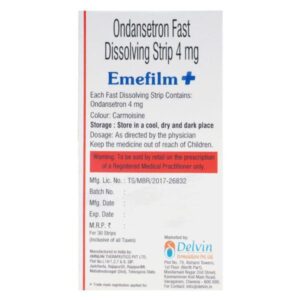ONDANSETRON AND PARACETAMOL
ONDANSETRON AND PARACETAMOL: Drug name: Ondansetron and Paracetamol
Use: Ondansetron is commonly used to prevent nausea and vomiting caused by chemotherapy, radiation therapy, and certain surgeries. Paracetamol, also known as acetaminophen, is a pain reliever and fever reducer.
Mechanism of Action: Ondansetron works by blocking the action of serotonin, a neurotransmitter in the brain that can trigger nausea and vomiting. Paracetamol works by reducing the production of prostaglandins, chemicals in the body that cause pain and fever.
Dose: The recommended dose of ondansetron varies depending on the specific situation. For preventing nausea and vomiting caused by chemotherapy, the usual adult dose is 8 mg orally or via injection, 30 minutes before the start of treatment, followed by 8 mg every 8 hours for 1 to 2 days. For paracetamol, the usual adult dose is 325 to 1000 mg every 4 to 6 hours, not exceeding 4000 mg in a 24-hour period.
Side Effects: The common side effects of ondansetron include headache, constipation, diarrhea, dizziness, and drowsiness. In rare cases, it may cause severe allergic reactions. Paracetamol is generally well-tolerated when used at recommended doses; however, in high doses or with prolonged use, it can cause liver damage. It is important to follow the recommended dosing guidelines and avoid exceeding the maximum daily dose.

